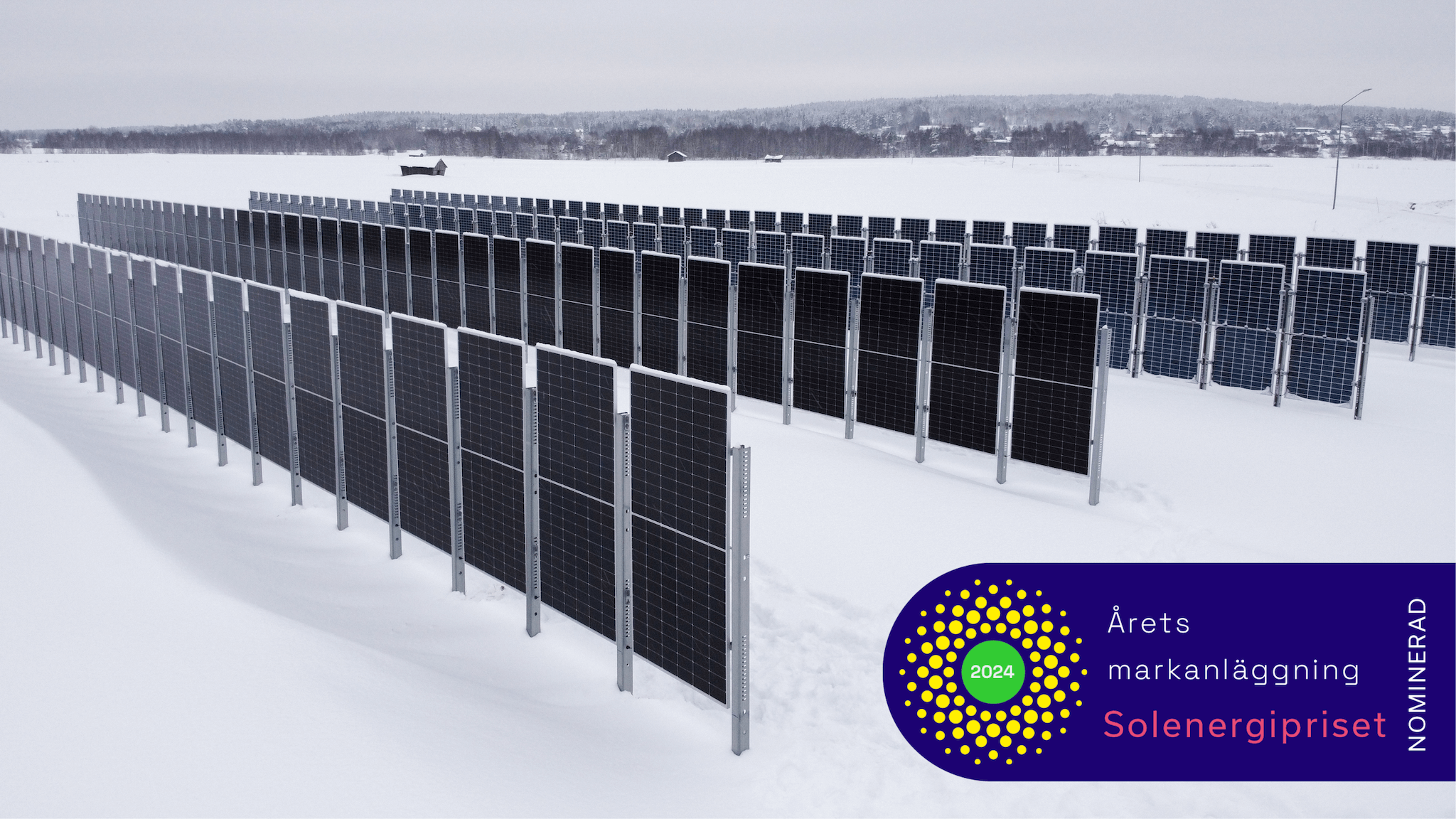/https%3A%2F%2Fsunnagroup.com%2Fwp-content%2Fuploads%2F2024%2F02%2FSolenergipriset2-web.png)
The pilot plant Lilla Norrskenet outside Luleå is nominated for the Solar Energy Prize 2024 in the category "Plant of the Year Land".
Since 2004, Svensk Solenergi has awarded three categories of “Solenergipriset” – the Solar Energy Prize for Facility of the Year Land, Facility of the Year Building and Achievement of the Year. The awards go to ” facilities, companies or private individuals whose achievements are worth highlighting as good examples to be inspired by”, according to Svensk Solenergi – the Swedish Solar Energy Association.
On their website describes the price as follows.
With the Solar Energy Prize, the industry association wants to focus on solar energy and contribute to increasing the power output in Sweden. The aim is to spread knowledge throughout the country about the solar energy industry’s most spectacular projects, thereby inspiring curiosity and creating interest. Therefore, each year the Solar Energy Prize highlights new examples of the industry’s most innovative ideas and developments – driving the technology forward. We also believe in the award’s ability to inform about standardized projects that reduce costs, make the technology more accessible and eventually create a larger market.
Sunna’s pilot plant Lilla Norrskenet outside Luleå is nominated for the Solar Energy Prize 2024 in the category “Plant of the Year Land”.
The winners will be announced in April at Svensk Solenergi’s annual meeting.

Lilla Norrskenet near Luleå is a pilot plant to test an innovative solution for solar energy production in northern conditions. The park has been designed to optimize the use of solar cells in Arctic and snowy climates and maximize the potential of solar energy in the north of Sweden. It was built in a short time from procurement to commissioning, which took place on one of the darkest days of the year in December 2023.
Located next to Alviksgården outside Luleå, the facility features vertically mounted bifacial panels in an east and west orientation. The design reduces losses from snow shading compared to traditional tilted panels where snow easily collects and risks to remain for a longer period of time. With fewer issues from snow shading, the park can take advantage of reflections from snow-covered ground during sunny winter days, and during the long days of the summer, there is the potential to produce electricity almost around the clock.